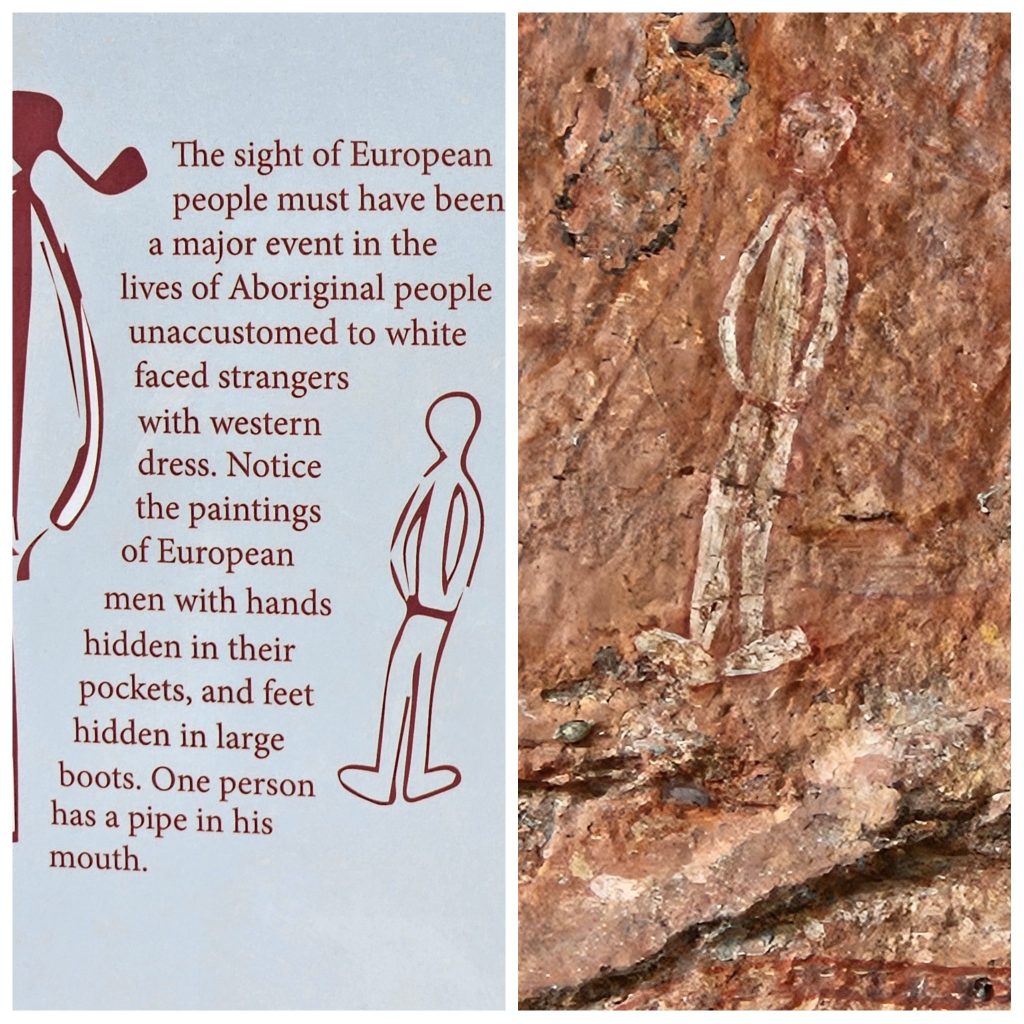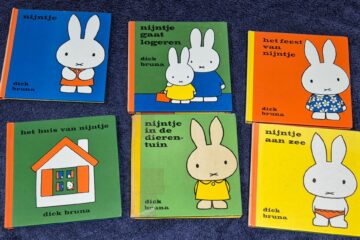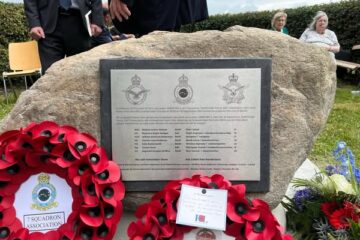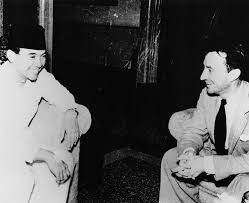The first known Dutch encounters with the Aborigines in Australia took place during the 17th century, when Dutch ships were looking for new trading opportunities and made voyages of discovery to the region now known as Australia.
It’s worth noting, however, that the lack of recorded incidents does not mean that there were no other instances of contact and/or conflict between the Dutch and the Aboriginal people apart from the ones mentioned below. Many historical records from this time are incomplete, and Indigenous perspectives and experiences were often not recorded or acknowledged.
The interactions between the Dutch explorers and the Aborigines did influence later European explorations.
The Duyfken – 1606
The first documented contact took place in 1606 when Willem Janszoon arrived on the west coast of the Cape York Peninsula. His ship, the Duyfken, was the first European ship to reach the Australian coast. Janszoon and his crew went ashore and probably met the Yolngu community of the region. There are no written records of this meeting, but according to oral traditions of the Yolngu, Janszoon was described as a “little man” with “red hair” and “white skin”.
In case of the loss of live of sailors of the Duyfken during the expedition also that information is not totally clear. What is more or less certain is that 9 sailors lost their lives.
There is the recorded story of the Aboriginal elder Jack Spear Karntin, who lived near Cape Keerweer (Kaap Keer Weer). He claims that during a fight 9 Dutchies and a large number of aboriginals were killed. However not all aboriginal stories are similar. Combining all the stories, including what is known from scattered Dutch archives, it looks most likely that at least one sailor was killed (speared by aboriginals) near Batavia River and likely at least 3 sailors killed near Cape Keerweer.
On the return journey the Duyfken anchored near Frederik Hendrik Island in Dutch New Guinea (now Indonesian west New Guinea). When trying to get firewood and water a scuffle erupted with the locals. Some sailors were killed, which brought the total to 9. So the most likely conclusion is that a minimum of 4 sailors were killed by aboriginals and a maximum of 5 sailors lost their lives at the hand of people from New Guinea.
There is no information how many Aboriginal people were killed during these encounters. But below is an interesting art work that includes the first contact with the Duyfken from an Aboriginal perspective.
| ‘Murriland! #1” 2015-2017 – an oil on canvass painting by Gordon Hookey about the colonialisation of Australia at the HOA Gallery at the Gold Coast. The painting directly speaks to the British cocolonisation of Queensland. ‘Murri’ is a broad term used to encapsulate all Aboriginal people of Queensland. Gordon Hookey’s clever wordplay in the title undermines the colonial narrative of Australian history and reclaims the state as Aboriginal land. Featured throughout the work is the weaving of the Rainbow Serpent spirit. The Rainbow Serpent represents the giving of life, with many Aboriginal nations sharing the ancestral sprit, The spirit force remains a strong, powerful connection to cultural identity despite colonialisation. |
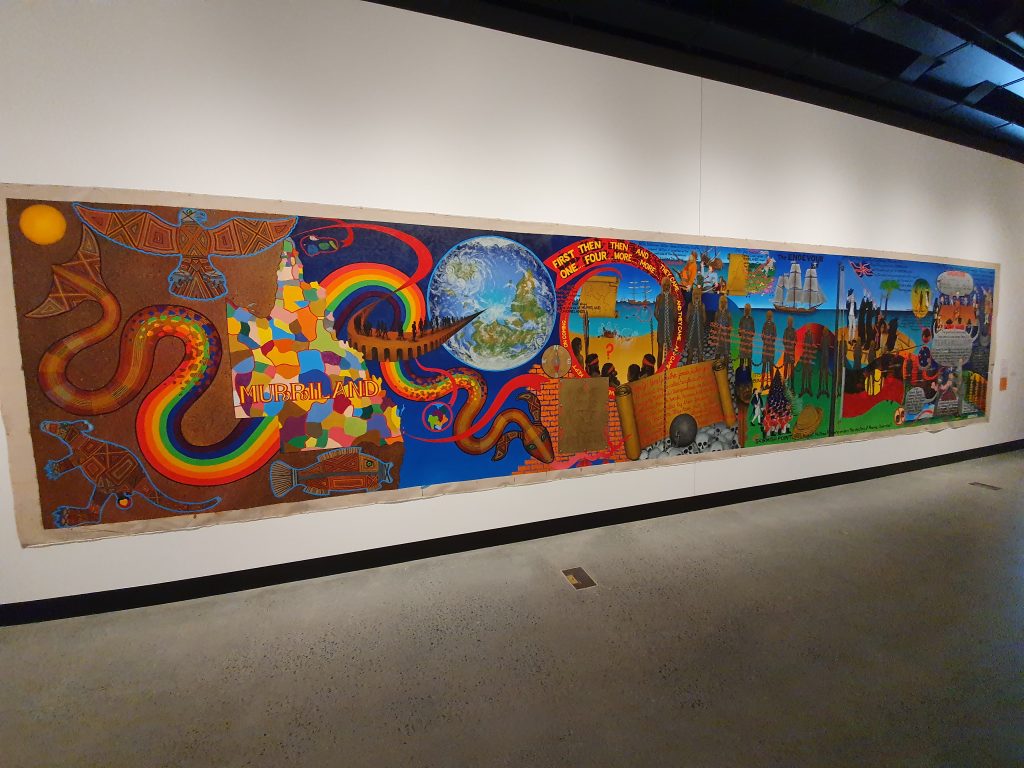
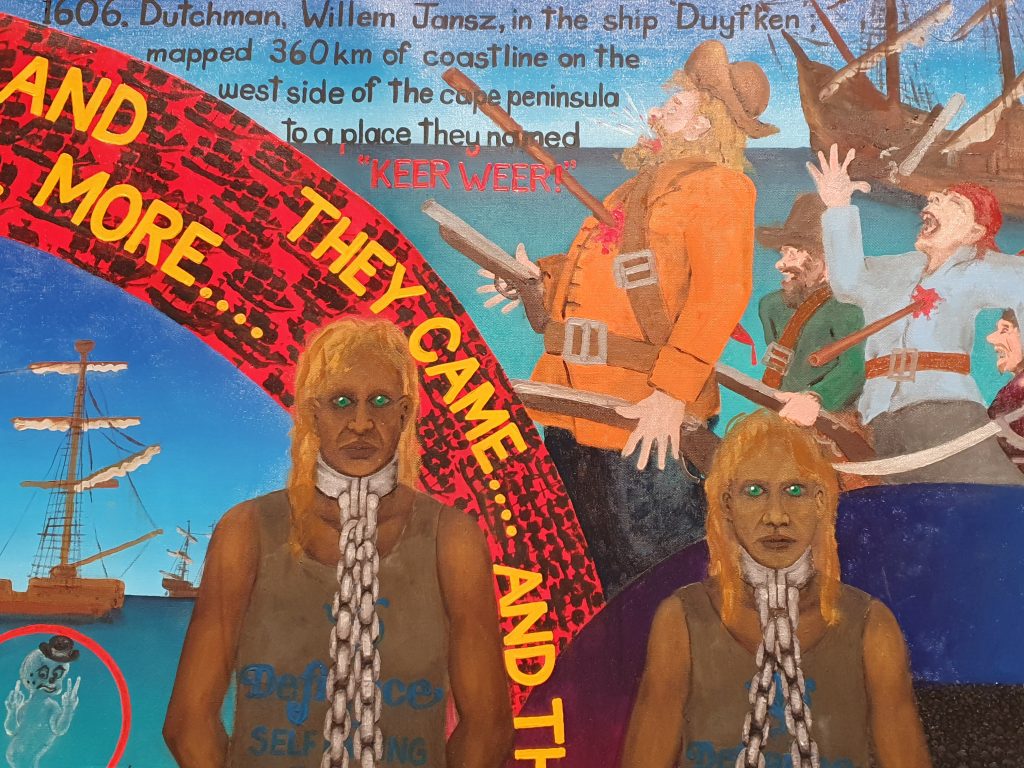
Dirk Hartog – 1616
In 1616, Dutch captain Dirk Hartog landed on an island off the coast of Western Australia, now known as Dirk Hartog Island. He planted a pole with an inscription to mark his arrival. There is no documentation of his encounters with the Aboriginal people on the island.
Abel Tasman 1642 – 1644
In 1642, Dutch explorer Abel Tasman explored the coasts of Tasmania and the southern part of Australia, which he called “New Holland”. Tasman had a number of violent confrontations with the Aboriginal people.
During his journey to the Tasman Sea, Tasman had no contact with the indigenous people. However, he reached the west coast of Tasmania and the south coast of Australia, where he had several meetings with Aboriginal people. It is not known exactly which tribe or community he met, as he did not leave notes on his observations of the indigenous people.
In his first meetings with the Aborigines, there was curiosity on both sides. Tasman offered mirrors and other gifts, and the Aboriginal people responded by giving spears and animal skins. However, after a few days, the atmosphere between the two groups changed. Tasman reportedly tried to capture some Aboriginal people to question them about the region and its inhabitants, which the Aboriginal people considered threatening and aggressive.
In a later encounter, the Aborigines threw spears at Tasman and his crew, killing one sailor and injuring several others. Tasman then ordered his crew to return to their ship and leave the Aborigines alone. The confrontations with the Aborigines during Tasman’s expedition left a lasting impression on the Dutch navigator and he warned other sailors of the hostility of the Australian indigenous
William de Vlamingh – 1696
In 1696, the Dutch captain William de Vlamingh landed in Western Australia.
On 10 January 1697, he ventured up the Swan River. He and his crew are believed to have been the first Europeans to do so. They are also assumed to be the first Europeans to see black swans, and De Vlamingh named the Swan River (Zwaanenrivier in Dutch) after the large number they observed there. The crew split into three parties, hoping to catch an Aborigine, but about five days later they gave up their quest to catch a “South lander”.
The Vergulde Draeck – 1656
On the night of the 28 April 1656, the Vergulde Draeck struck a submerged coral reef midway between what are now the coastal towns of Seabird and Ledge Point, Western Australia.
A rescue mission was launched from Batavia. On 9 March 1658, Captain Jonck of the Emeloordt managed to send a small party to land. Upon returning, the shore party reported having seen three Aboriginal natives of tall stature who attempted to communicate with them using basic hand signals. This story of ‘first contact’ was a peaceful exchange, likely with the Yuet people of Western Australia.
First contact – Aboriginal Rock Art
There is rich evidence of European contact through the dozens of rock arts depicting European boats and people. However, it is not always clear which ships are depicted and with country they represented.
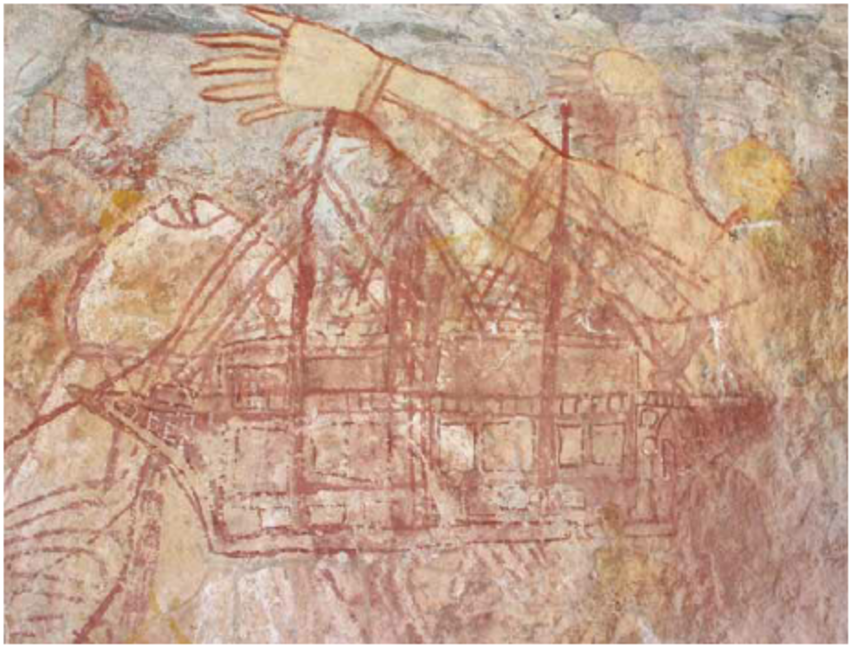

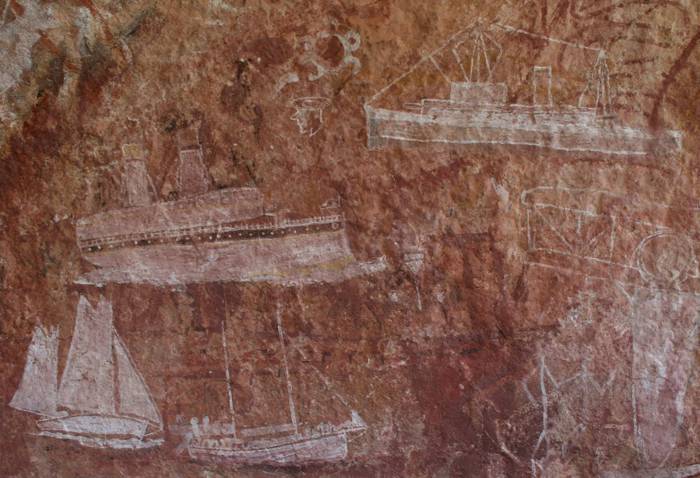
Djulirri, Arnhem Land.
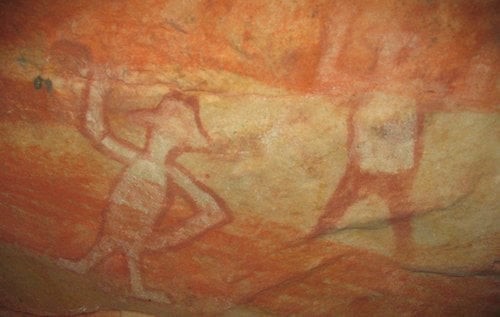
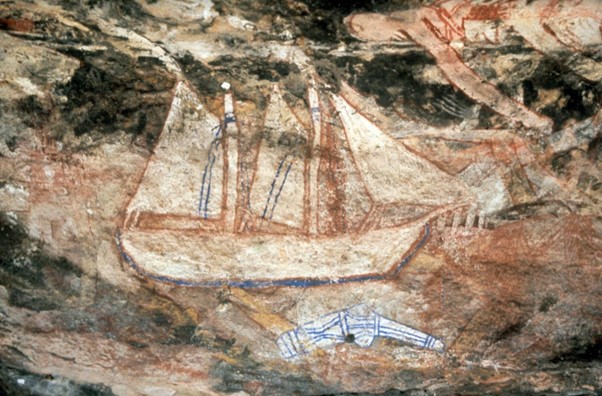
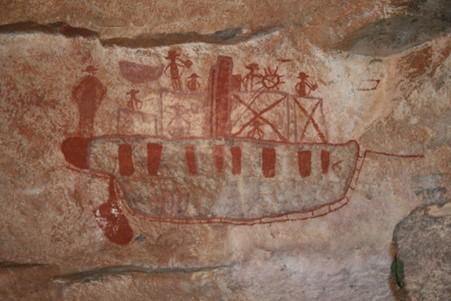
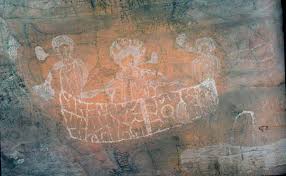
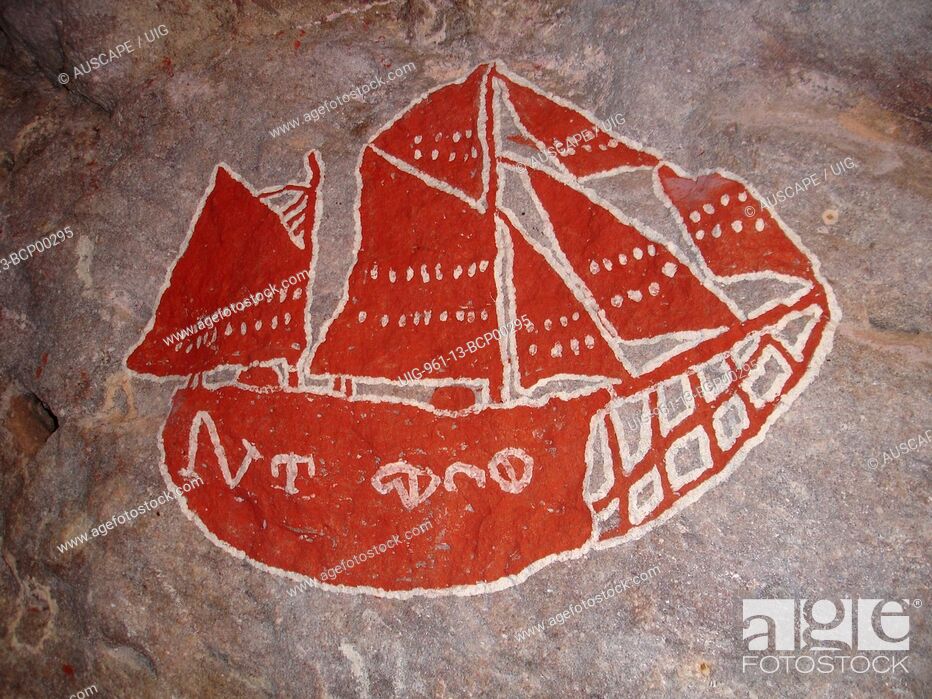
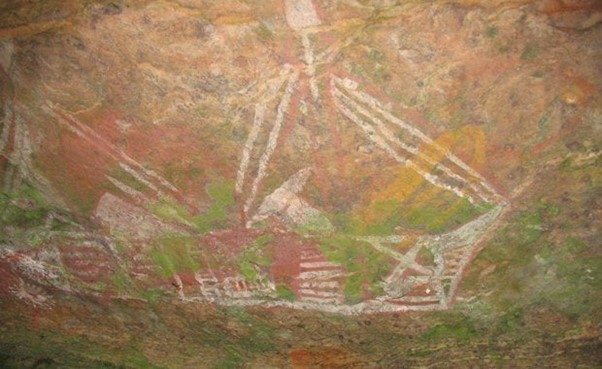
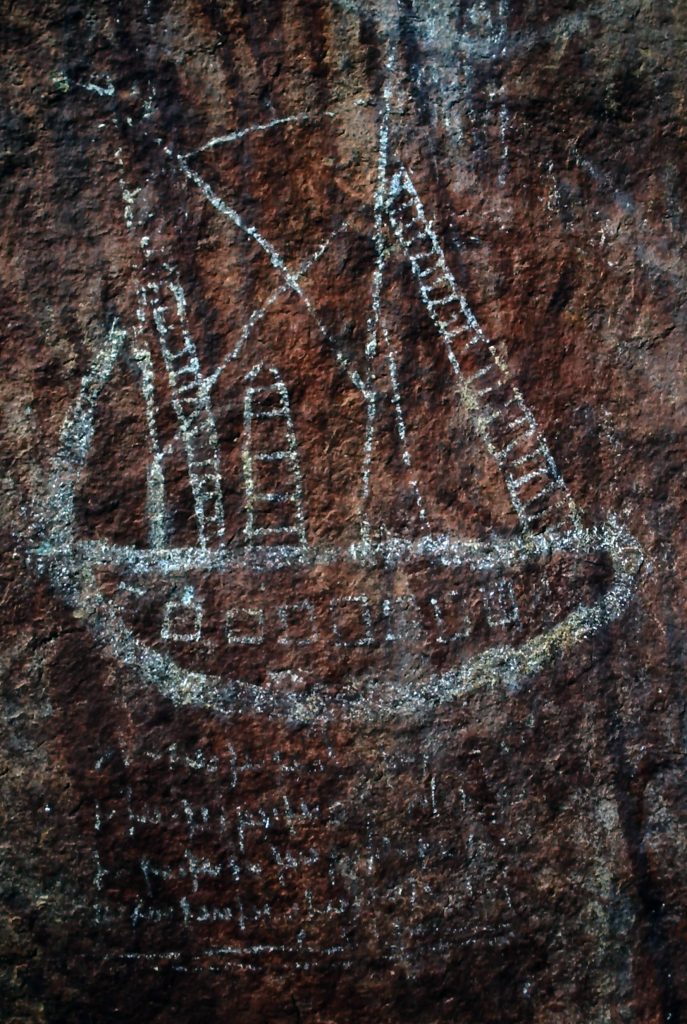
The rock art to the left is known as the ‘Mystery Ship of Walga Rock’. It lies more than 350 km inland from the nearest place of the Western Australian coast.
Some people believe the picture is of one of the long-lost Dutch ships which came to grief off Western Australia’s rugged coast in the 17th Century. The VOC ships Batavia and Zuytdorp head the list.
It is possible these men may have been taken in by local Aborigines and followed the Murchison River inland to the Wajarri people’s land and made the painting.
Of course it could also depict on other European vessel and the discussion about this continues.
